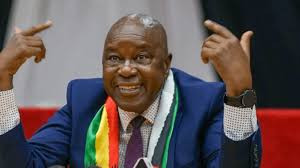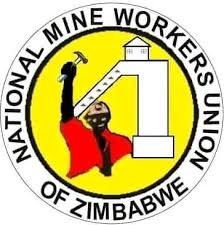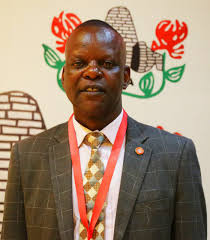IN 2024, Bulawayo has seen remarkable strides in various sectors, with a focus on sustainability and overcoming the challenges that have long plagued the city.
One of the most significant advancements has been in the healthcare sector, where hospitals have embraced solar power as a solution to the country’s ongoing power crisis.
This move is not just a response to energy shortages, but a forward-thinking approach to securing the future of the city’s health services, as well as setting a standard for other sectors to follow.
The ongoing power crisis in Zimbabwe has posed significant challenges to households and businesses, with frequent power outages affecting critical services, particularly in hospitals.
Zesa Holdings, the State-run power utility, has struggled to meet the national demand, with Kariba Dam, one of the country's two primary energy sources, facing reduced generation due to low water levels.
On the other hand, antiquated machinery and constant breakdowns at the rehabilitated Hwange units 5 and 6 have also exacerbated the power
Keep Reading
- ZVDT laments lack of development in Zambezi Valley
- €30m set for Kariba Dam wall rehab
- Letters: Democratise natural resource governance
- Hospitals face acute staff shortage
The situation has made uninterrupted electricity in hospitals an increasingly difficult task.
In response, Bulawayo’s major hospitals have made bold moves to reduce their dependency on the national grid.
United Bulawayo Hospitals (UBH) recently completed a massive solar plant, marking a significant milestone in the city’s healthcare transformation.
With this new solar system, UBH has moved away from the unreliable national grid, ensuring that critical operations and services continue without disruption.
“Bulawayo hospitals are leading the way in adopting solar energy, with UBH and Mpilo set to join the ranks of solarised healthcare facilities,” said Paul Nyoni, the permanent secretary for Bulawayo Provincial Affairs and Devolution.
“This transition is crucial in maintaining essential services, especially in the face of energy shortages and rising costs.”
Mpilo Central Hospital, which is also in the process of installing its own solar system, is expected to complete the transition within weeks.
This move follows the example set by UBH and will help ensure that Mpilo can rely on solar power to meet its energy needs.
These solar projects are part of a larger strategy to address Zimbabwe’s power shortages, which have been a critical barrier to growth and development across various sectors.
The government’s push for renewable energy solutions has also seen progress in other parts of the city.
While the healthcare sector has led the charge, Bulawayo is seeing advancements in various sectors, including education, housing and industry.
The Makhurane Technovation Centre at the National University of Science and Technology was completed this year, further promoting innovation and education in technology.
In addition, the expansion of devolution funds schools is progressing, helping address the demand for more educational infrastructure.
The private sector has also seen growth, with significant investments in manufacturing and infrastructure.
Baker’s Inn, one of Zimbabwe’s leading confectioneries, recently commissioned a new factory in the city, further boosting local production.
Meanwhile, the ProFeeds plant is nearing completion, contributing to the growth of the agricultural sector.
These developments come alongside increased employment, with the majority of new jobs in the textile sector, such as at Archer and Carousel, being filled by women and youth, a sign of the progress being made in creating inclusive economic opportunities.
Housing delivery in Bulawayo is another area that has seen improvements, with Bulawayo City Council (BCC) focusing on public-private partnerships to service stands in areas such as Mahatshula East and Luveve North.
In addition, private sector players are making significant strides in developing stands and building homes in areas like King City and Rangemore.
“Bulawayo Metro maintained its position as the second-biggest provincial economy after Harare, and has the highest GDP [gross domestic product] per capita in the country,” Nyoni said.
“It exports the largest proportion of its output in Zimbabwe, which highlights its growing importance in the national economy.”
Despite these positive developments, the region still faces significant challenges, particularly with water supply.
The government appointed a technical committee to work alongside BCC to find short-term solutions to the water crisis that has been a long-standing issue in Bulawayo.
The committee recognised that the water from Insiza and Umzingwane dams could provide a year’s worth of water supply to the city at current levels, with the capacity to increase when the rains come.
The committee’s solution, which has been approved by the government, involves a US$14,3 million investment to install pipelines and pumps from these dams to Bulawayo’s water supply system.
These interventions are already underway and in the long-term, the completion of the Gwayi-Shangani Dam will provide a more sustainable water supply for the city.
Nyoni pointed out: “In terms of water, residents can expect the completion of the short-term measures to address the water shortage. And in energy, a good rainy season will increase supply at Kariba. But going forward, more renewable energy solutions will be adopted.”
The city’s focus on renewable energy is also evident in its growing commitment to solar energy.
Mpilo and the 21 council clinics have all been solarised, with UBH also in the process, helping to reduce reliance on the national grid and ensuring that healthcare services continue without interruptions.
Bulawayo’s efforts to combat climate change have also been visible in the promotion of sustainable practices.
The city has undertaken initiatives to improve waste management, including waste-to-energy proposals and has supported the growth of recycling programmes.
The city’s commitment to cleanliness has been reinforced through the President’s Clean-Up Campaign, which has been supported by Bulawayo’s own spring cleaning initiative.
Additionally, the city has promoted cycling through events aimed at encouraging the use of environmentally friendly transportation.
The government has also continued to promote investment in Bulawayo.
The Zimbabwe Investment and Development Agency recently issued seven investment licences worth over US$134 million to businesses in Bulawayo, demonstrating the growing confidence in the city’s economic potential.
Notable investments include expansions at companies like Ngwebu Breweries, Datlabs and Zambezi Tanneries, which have all contributed to job creation.
“The recent budget made a national allocation, and the province will be pushing for local businesses to access the same,” Nyoni said.
“This will help local companies to recapitalise and retool, ensuring that they remain competitive.”
Looking ahead, Nyoni emphasised the continued focus on addressing water and energy shortages and fostering local investment.
“We are focusing on increasing water and energy supply and securing capital for local businesses to thrive,” he said.
“We are also pushing for more renewable energy solutions, as the future of the city and country depends on sustainable growth.”
The solarisation of hospitals is just the beginning of Bulawayo’s journey towards energy independence, and with continued government support and private sector involvement, the city is poised to lead Zimbabwe’s transition to a more sustainable and resilient future.
As 2024 draws to a close, Bulawayo stands as a beacon of progress, a city that has not only embraced its challenges, but is actively turning them into opportunities.
With ongoing investment, sustainable practices, and a focus on healthcare, education, and infrastructure, the city’s future looks brighter than ever.





